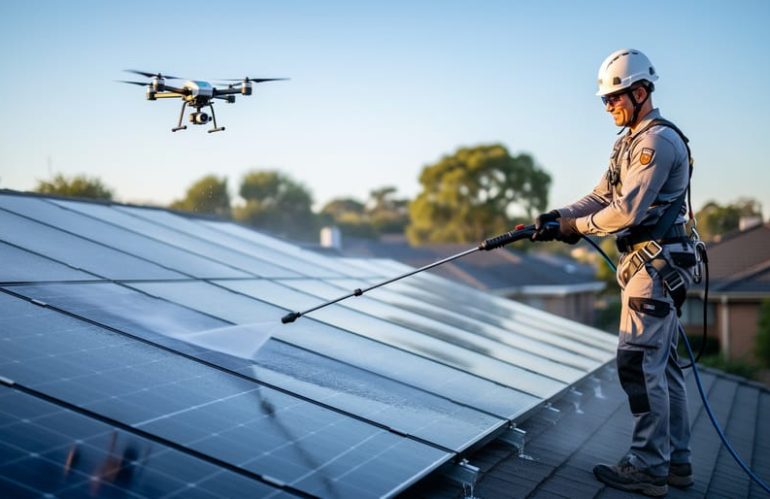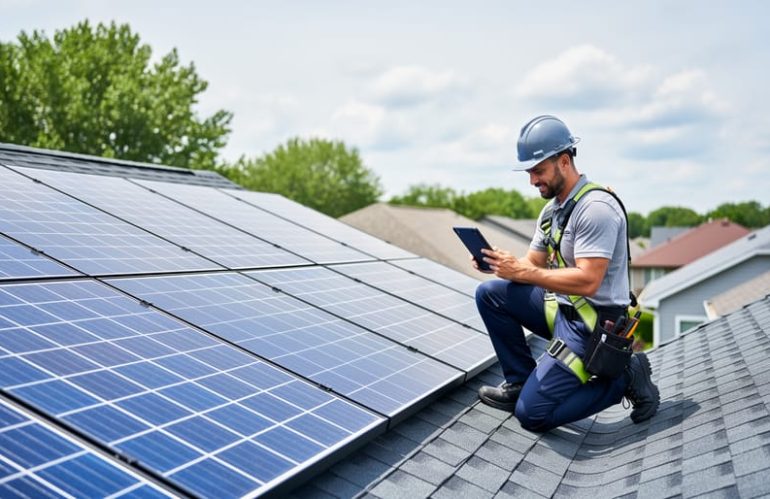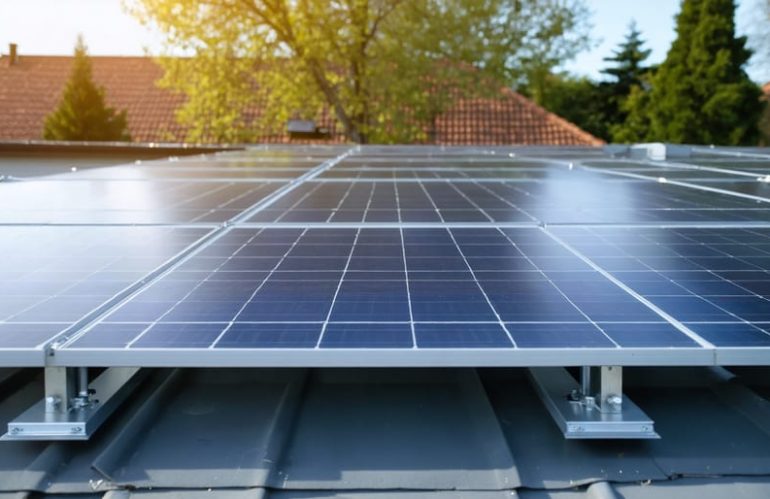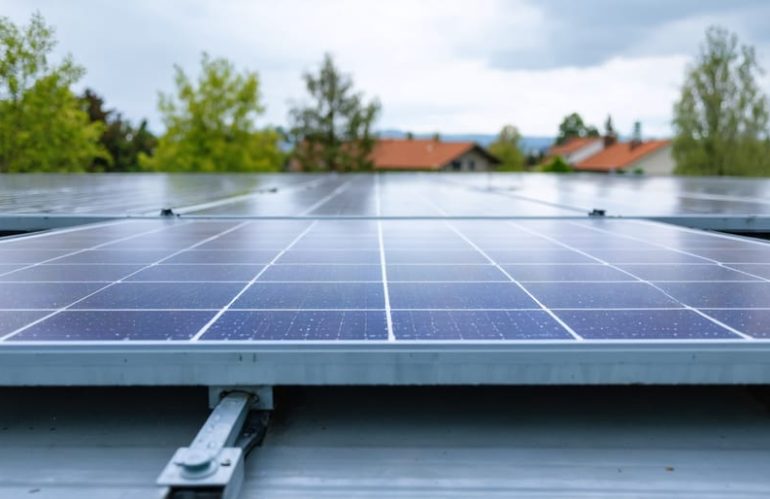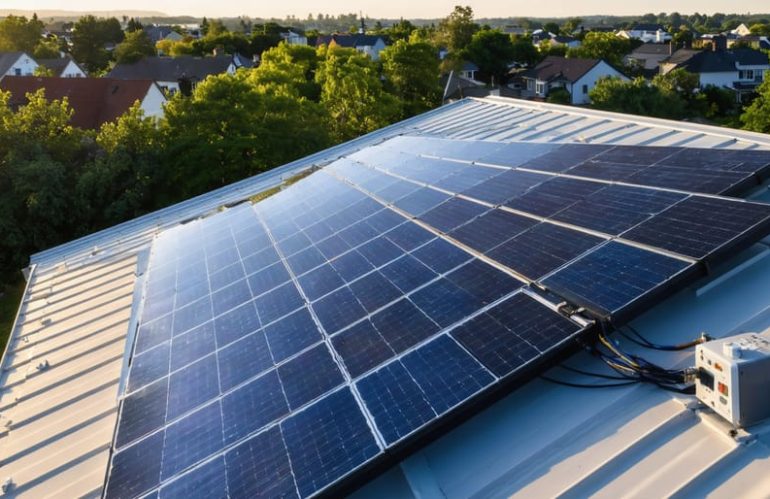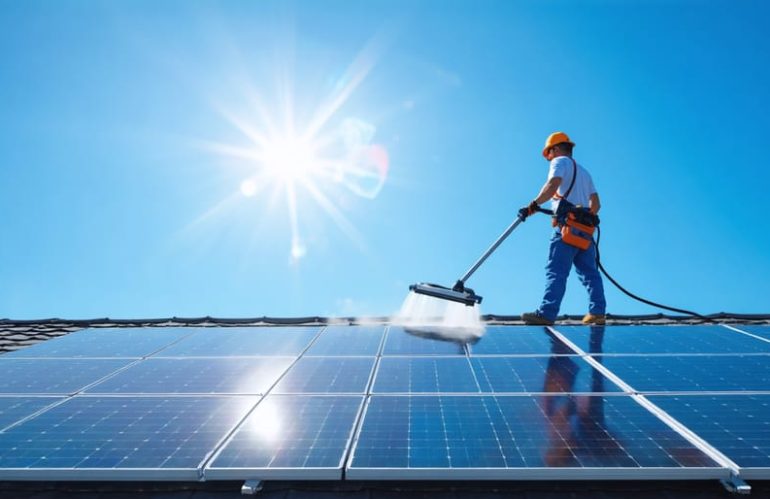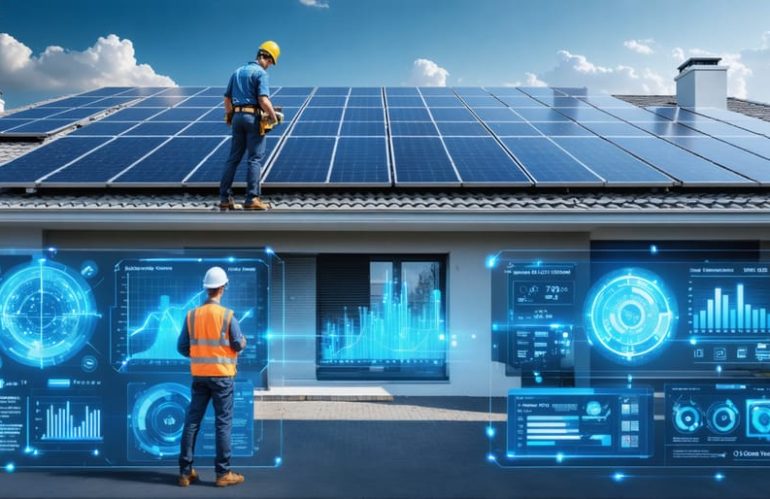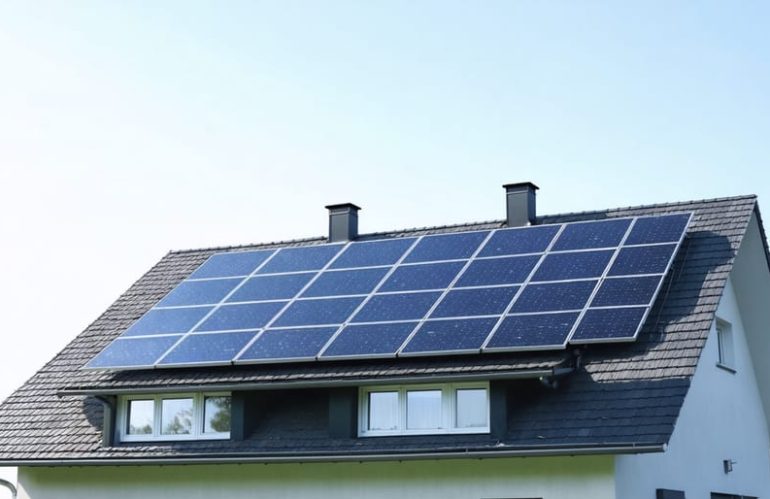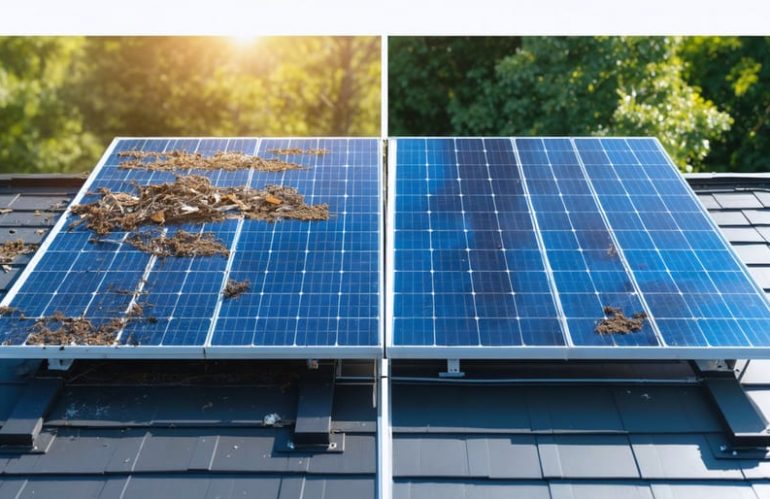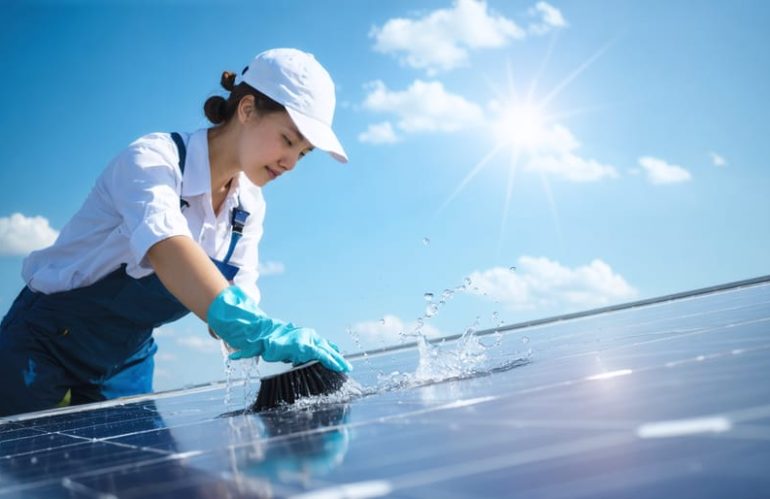Your solar panels are losing efficiency right now, and most homeowners don’t realize it. Dust, debris, and environmental buildup can reduce your system’s output by 20-30% annually, directly impacting the money-saving benefits you invested in. The good news? Modern maintenance has evolved far beyond climbing on your roof with a garden hose.
Smart monitoring systems now alert you to performance drops before they become costly problems, while automated cleaning technologies eliminate the guesswork and physical labor. Professional-grade water-fed poles with purified water systems prevent mineral deposits without leaving …
Category: Maintenance and Operations
Guides, procedures, and best practices for maintaining and operating solar panel systems
Why Your Solar Panel Maintenance Costs Keep Changing (And How to Plan for It)
You’re probably paying more for solar panel maintenance than your neighbor—not because you’re being overcharged, but because your system’s unique characteristics determine your actual cost. Risk-based pricing means your maintenance fees reflect specific factors like your roof’s pitch, your panels’ age, local weather patterns, and even how many trees surround your home. It’s the same principle your car insurance uses: higher risk situations cost more to maintain, while lower risk setups save you money.
Here’s the good news: understanding risk-based pricing puts you in control. Unlike the …
How Thermal Management Adds 10+ Years to Your Solar Panels
Your solar panels face a hidden challenge that directly impacts your wallet: heat. While sunlight powers your system, excessive temperatures can reduce your panels’ efficiency by 10-25% and shorten their lifespan—potentially costing you thousands in lost energy production and earlier replacement needs.
Here’s the good news: thermal solar technology has evolved dramatically. Modern systems incorporate intelligent heat management that keeps your panels operating at peak performance for 25-30 years or longer. Understanding how temperature affects your investment isn’t just technical knowledge—it’s the key to…
Keep Your Solar Panels Running Cool and Saving You Money
Your solar panels lose up to 25% of their efficiency when they overheat—a hidden cost that directly impacts your energy savings and return on investment. Every degree above 77°F reduces panel output by approximately 0.5%, meaning those scorching summer days when you need power most are exactly when your system underperforms.
**Keep your panels cool and maximize your savings** by understanding that effective temperature management isn’t complicated or expensive. Most homeowners can implement simple passive cooling strategies immediately, while others benefit from understanding when active solutions make financial sense….
Solar Panel Remote Monitoring: Your System’s Health at Your Fingertips
Transform your solar investment into a smart energy solution with a solar monitoring system that puts control at your fingertips. Today’s remote monitoring technology lets you track energy production, detect performance issues, and optimize solar panel efficiency from your smartphone or tablet—all in real-time. Whether you’re at work or on vacation, these intelligent systems alert you to maintenance needs, measure cost savings, and provide detailed insights into your …
Easy Solar Panel Cleaning from Ground Level: Keep Your Panels Spotless Without Climbing
Keep your solar panels performing at peak efficiency without ever climbing a ladder. The impact of dirty solar panels can reduce energy production by up to 25%, but ground-level cleaning offers a safe, effective solution. Using an extendable water-fed pole with soft bristles, deionized water, and specialized solar panel cleaning attachments, you can maintain your investment while keeping both feet firmly on the ground. Modern telescopic equipment reaches panels up to 24 feet high, making …
Smart Quality Control Cuts Solar Installation Costs While Boosting Sustainability
Quality control costs represent a critical investment in your home’s sustainable future, not just another expense on your balance sheet. Smart homeowners recognize that strategic spending on quality assurance actually saves money by preventing costly repairs and system failures down the road. While initial quality control measures might seem expensive, they typically account for only 2-3% of total project costs while potentially preventing 15-25% in future repair expenses.
Understanding these costs helps you make informed decisions about your home’s sustainable features. From solar panel installation inspections to …
Solar Panel Size Matters: How Dimensions Impact Your Home’s Energy Health
Residential solar panels have transformed from a niche eco-friendly choice to a mainstream energy solution, with dimensions playing a crucial role in their effectiveness and installation success. Today’s standard residential solar panels typically measure between 65 to 71 inches long and 39 to 41 inches wide, dimensions carefully engineered to balance power generation with practical rooftop installation requirements. These measurements aren’t just numbers – they represent the sweet spot between maximum sun exposure and structural feasibility for most American homes.
Understanding solar panel dimensions is essential for…
Smart Solar Maintenance: How Preventive Care Saves You Thousands
Preventive care investments in healthcare systems consistently deliver returns ranging from 2:1 to 10:1, transforming both patient outcomes and financial sustainability. Regular health screenings, vaccinations, and lifestyle interventions cost significantly less than treating advanced diseases, while dramatically improving quality of life. Modern data analytics now enable healthcare providers to precisely target preventive measures, maximizing their impact and return on investment. By implementing comprehensive preventive care programs, organizations can reduce emergency room visits by up to 25% and slash chronic disease management costs …
Simple Steps to Keep Your Solar Panels Running at Peak Performance
Maintain your solar panel investment and maximize energy production with proper maintenance that takes just a few hours each season. Regular cleaning and inspection not only extend your panels’ lifespan but can boost their efficiency by up to 15%. From preventing costly repairs to ensuring optimal performance year-round, these maintenance practices protect your renewable energy investment while keeping your electricity bills consistently low.
Clear debris and dust from your panels monthly using soft brushes and non-abrasive cleaners to prevent power output reduction. Monitor your system’s performance through your …

